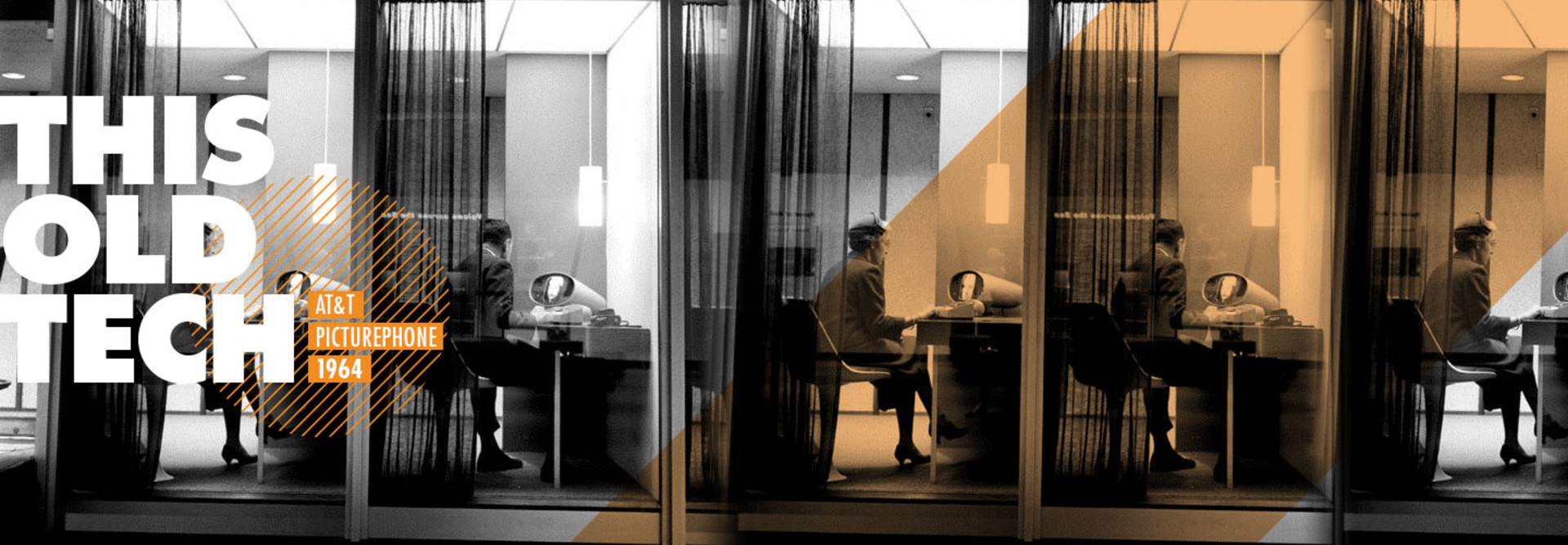AT&T Picturephone Helped Usher in the Video Conference Era
Video calling and video conferencing is something most people do on a regular basis these days if they have access to a smartphone and modern communications networks. We use Apple’s iPhone to FaceTime with colleagues and friends, use high-definition video calling on other smartphones and tablets, and conduct conference calls via video in the office and on the road.
The forerunner to today’s video conferencing done over IP networks traces its origins to the 1920s, though the first limited commercial video conferencing in the United States did not occur until 1964.
AT&T’s Bell Labs started researching the idea of video calling decades before a commercial-ready device was introduced. As Mashable notes, according to the 2004 article “On the Persistence of Lackluster Demand — the History of the Video Telephone,” authors Steve Schnaars and Cliff Wymbs describe an April 7, 1927 primitive call that Commerce Secretary (and later U.S. president) Herbert Hoover took in a Washington, D.C., “video booth” while connected to a Bell Labs videophone in New York City.
The device “took up half a room” and “had two large screens — a small screen that provided excellent picture quality but was too small to see and a larger screen that offered little more than a crude silhouette. Technically speaking, the screen flashed 18 frames per second, fast enough to seem animated.”
The world has come a long way since then.
WHAT Is the AT&T Picturephone?

Courtesy Mike Mozart / Flickr
AT&T spent the ensuing decades pouring money into research and development on the Picturephone, but by the mid-1950s the company still only had a crude device that could transmit “an updated still image only once every two seconds,” according to the BT website Connected Earth. The company spent the next few years refining the product.
At the 1964 World’s Fair in New York City, AT&T demonstrated Bell’s Mod I (Model I) Picturephone. “Fair-goers had to wait on line at the Bell Telephone exhibit at the northeast tip of the Fair to hold a 10-minute visual talk with a complete stranger at a similar Picturephone exhibit at Disneyland in California,” Mashable notes.
According to Wired, the Picturephone had a video camera, screen, a push-button phone, speakers and a power supply, and “even let users control whether the video feed was transmitted to the person they were calling. The sound and quality were good, and people generally liked seeing the person they were speaking to.”
WHEN Was the AT&T Picturephone Introduced?

Courtesy AT&T Archives and History Center
Charles Mapes, an AT&T engineer, told the Cincinnati Enquirer in April 1964 that “we can’t hope to provide Picturephone service for the ordinary residence and business office in the near future, but we are hopeful of offering the service in the next few months on a market trial basis.”
And indeed, as Wired notes, “commercial service started on June 25, 1964 at calling booths in New York City, Washington, D.C. and Chicago.” AT&T itself pointed out in 2012 that “these three Picturephones could communicate only with each other. Costs ranged from $16 to $27 for three minutes (that’s $118 to $200 in 2012 dollars!).” That’s $126 to $212 in 2016 dollars, for those keeping score on inflation.
Wired reports, however, that “interest was lukewarm, at best.” The limited cities and cost also inhibited enthusiasm.
AT&T expanded the service in 1970 to Pittsburgh, where service launched with 38 Picturephones at eight companies. The cost was “quite expensive, at $160/month for the service,” AT&T notes, which works out to $1,005 per month in 2016 dollars — though the plan came with a minimum of 30 minutes. Additional sets on the same line added $50 per month ($314 in 2016 dollars), and additional minutes were 25 cents each ($1.57 in 2016 dollars).
Some companies, like Alcoa, eagerly adopted the technology, which AT&T notes “had built a system around this asset, the APRIS, or Alcoa Picturephone Remote Information System. APRIS’ could display a matrix of 20x22 characters, and users navigated the system with the buttons on the telephone.”
WHY Did the AT&T Picturephone Die Off?

Courtesy AT&T Archives and History Center
Around the time of the launch, according to AT&T, “the Bell System projected that by 1975 there would be a hundred thousand Picturephones in the national network. But the huge costs drove away businesses customers, and by July 1974, the Pittsburgh market had only five subscribed Picturephones on the network.”
Nationwide, the number of Picturephone subscribers numbered only in the hundreds, primarily in Chicago, which had followed the 1970 Pittsburgh launch.
According to Mashable, “Schnaars and Wymbs reported that between 1966 and 1973, AT&T spent half a billion dollars on Picturephone R&D with nothing to show for it. AT&T’s corporate historian, Sheldon Hochheiser, called the videophone ‘the most famous failure in the history of the Bell system.’”
AT&T tried to revive the Picturephone in the 1980s and 1990s, but each service proved too expensive for mass adoption.
What changed and made video calling ubiquitous? As Mashable notes, it was the fact that, by the mid-2000s, users around the world had devices — notebook computers and later smartphones and tablets — with front-facing cameras.
“Since we already had the devices, all we needed was software: Skype, ironically, was introduced in August 2003, just months before Schnaars’s and Wymbs’s analysis, followed by Apple’s FaceTime in mid-2010,” Mashable notes. “Once we had the devices and the software, which we didn't have to buy separately and especially just for video calling, it's become obvious that we did want to be seen on the telephone.”

When limited commercial Picturephone service started in 1964, customers needed to schedule their allotted 15 minutes of screen time in advance.
"This Old Tech" is an ongoing series about technologies of the past that had an impact. Have an idea for a technology we should feature? Please let us know in the comments!









